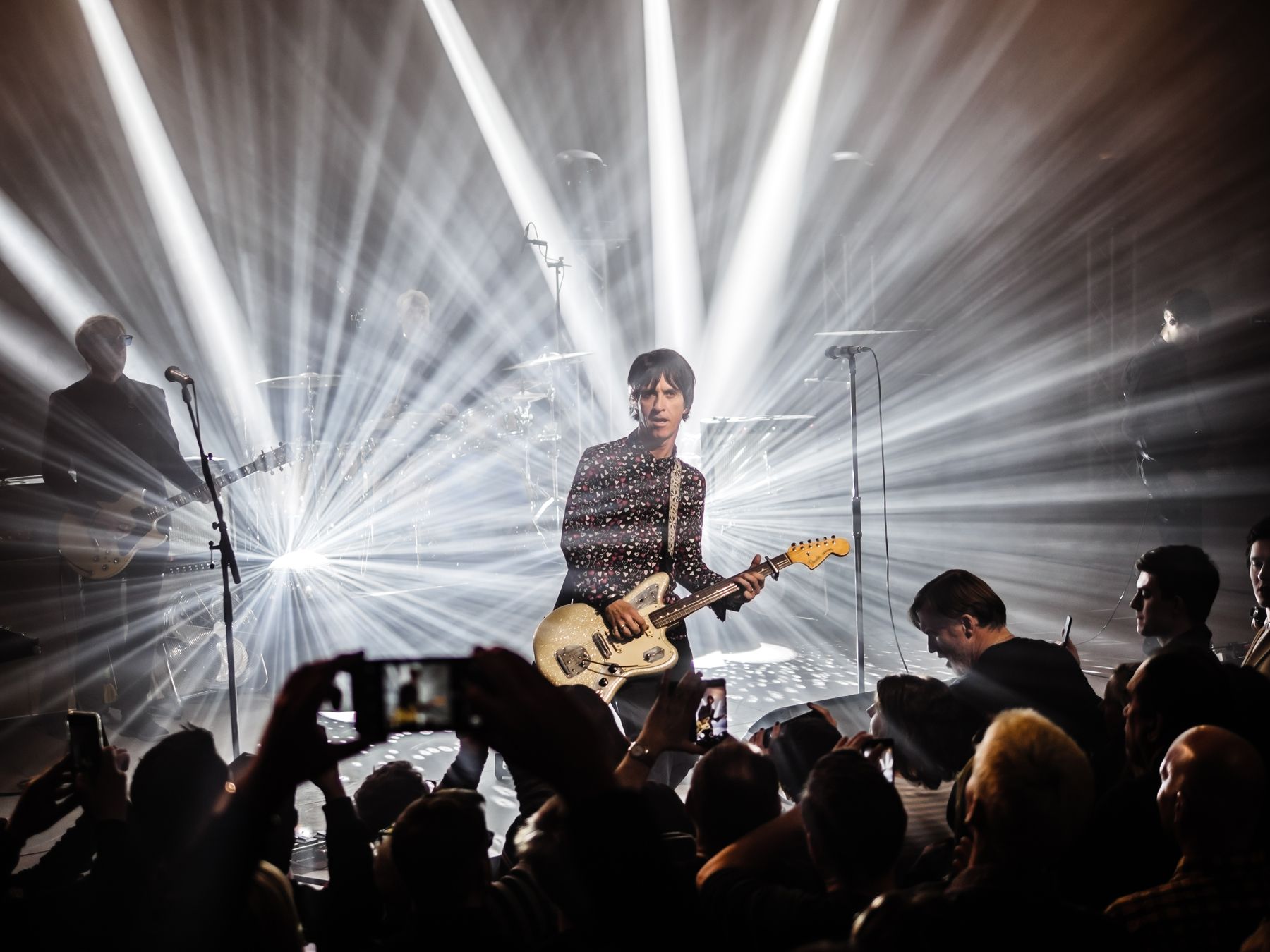The Johnny Marr Call the Comet tour visits EartH, creating space in the mix with L-ISA Immersive Hyperreal Sound
Johnny Marr, one of the UK’s most prolific songwriters, producers, and collaborators has been on the road again, this time with his fourth solo studio album, Call the Comet. The former founding lead guitarist of The Smiths has forged a shining solo career since his debut album in 2013, bringing his latest UK journey to a stellar conclusion with a sold-out date at EartH (Evolutionary Arts Hackney), London, which boasts the first permanent installation of L-Acoustics’ L-ISA Immersive Hyperreal Sound technology in a European live music venue.
For Marr’s Front of House Engineer, Russ Miller, this was his first date with L-ISA, and his post-show report was glowing: “I was blown away by it,”he says. “The separation is unbelievable, without it feeling like it’s separate sources. At sound check our backline techs were amazed: we had people just walking around the venue listening; it sounded the same from front to back and from side to side.”
Miller was contacted prior to the gig by EartH’s Alessandro Melchior, Sound Engineer, and was pleased to have a day in the venue before the show to work with some virtual sound-check material. “You can’t be afraid of new technology,” says Miller. “I say just get involved and see what it can do.”
L-ISA Immersive Hyperreal Sound technology uses spatial audio processing to position up to 96 sound objects in three dimensions inside a performance space. The EartH L-ISA Frontal system comprises five hangs of seven Kara and a central sub system of four KS28 flown in end-fire configuration in front and above the central Kara hang. Ten X8 enclosures are positioned along the stage lip for front fill. 12 Syva make up the surround system—four per side—mounted along the left, right, and rear walls. An overhead system of eight ceiling-mounted X8 completes the installation.
Miller decided to make the most of L-ISA and move to a more object-based mix for the show: “We’ve got the two-channel show to a point where, input-wise and processing-wise, I have the kick, snare, bass, and lead vocals in the centre of the mix with effects specifically to give the lead vocal more width. I then push the guitars and ‘keyboard’ elements out to the side and use delay cabinets where the precedence effect happens [the Haas region] to clear space for the central elements. This creates a stereo illusion and gives mono compatibility even when the speaker stacks are a long way apart, so you get pseudo stereo without the old ‘disappearing guitar’ problem when a listener is right in front of the cabinets one side. But switching to L-ISA and not having to jump through hoops to get the separation was amazing. With L-ISA, if you put the vocal in the centre, it’s in the centre and not a phantom centre.”
The Call the Comet tour uses DiGiCo SD11 consoles, sharing SD Rack I/O. In this instance, Miller’s FOH SD11 was connected to EartH’s in-house DiGiCo SD12, giving him more real estate to play with and allowing him to get creative with L-ISA. DiGiCo consoles now have natively integrated L-ISA Source Control functionality, so Miller was able to pan from the console, while Melchior provided support on the L-ISA Controller software.
In addition of taking advantage of L-ISA spatialization to place sound objects to reflect their actual physical location on stage, Miller decided to make full use of L-ISA’s three-dimensional processing for a psychedelic moment in the Marr set. “Johnny has a song on the new album called ‘New Dominions’. It has a break-down section in the middle that comes down to just bass and drums, and then Johnny comes in and there are delay throws where I change the delay time so that it creates a pitch change. It’s an old trick, but it works for this.” At EartH, Miller took the stereo delay output and sent it to the house console where they could ‘play’ the L-ISA Pan, Width, Depth, and Elevation parameters. “I said let’s go crazy and throw it around – send it over people, to the back, all around,” says Miller. “Johnny always said it should be trippy and psychedelic. It worked incredibly well.”
At EartH, Miller felt that a significant benefit of L-ISA was the exceptional inherent sound quality achieved with minimal effort: “I often have to work with the bottom end to reduce a problem, so you get used to going into venues and wondering what you will have to deal with for that show,” he explains. “Then, when you’re faced with a really well set-up system, you have to take a moment and think ‘Am I hearing things? I don’t have to do anything.
“EartH was a step on from that. It was balanced, yes, but felt full range. It didn’t feel like the subs were tacked on; it felt deeper. There’s articulation down there, so it’s easier to separate bass and kick; you can pinpoint things that you just couldn’t hear before.”
In what might have otherwise been a challenging space, multiple discrete physical full range sources create a wide sweet spot, bring clarity to the soundscape, and lift a burden from the drivers.
“After only about four minutes of putting stuff through the PA I realised that this system is a solution to a very old problem,” Miller concludes. “It’s a big move into bringing down sound levels so you’re not smashing people in the face, but you’re still producing something that excites and intoxicates the audience. This technology is amazing, it’s not going away, and it can only become more popular.”
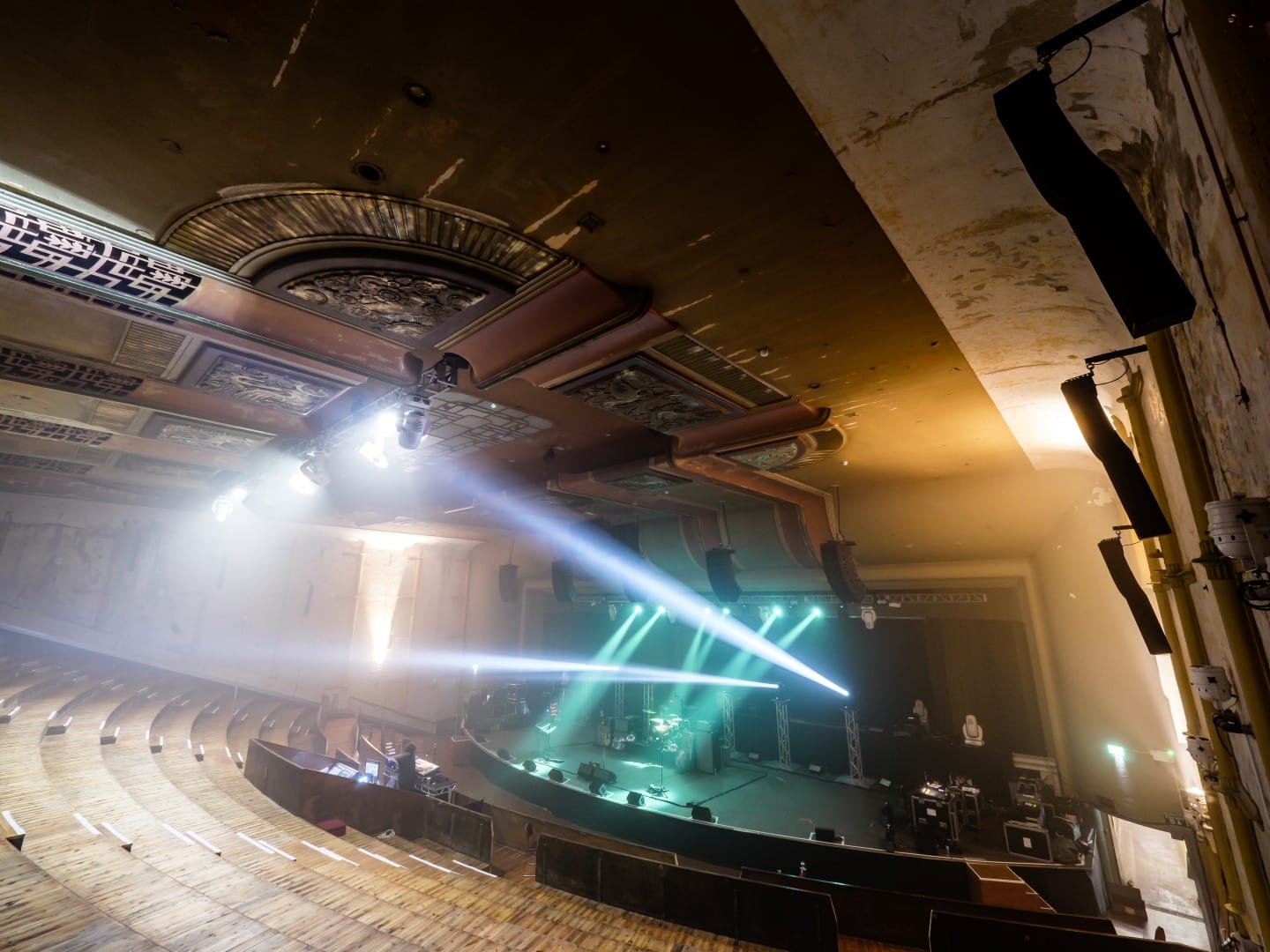
EartH’s L-ISA Frontal system comprises five hangs of seven Kara and a central sub system of four KS28 flown in end-fire configuration in front and above the central Kara hang. Ten X8 enclosures are positioned along the stage lip for front fill. 12 Syva make up the surround system—four per side—mounted along the left, right, and rear walls. photo Maria Zhytnikova 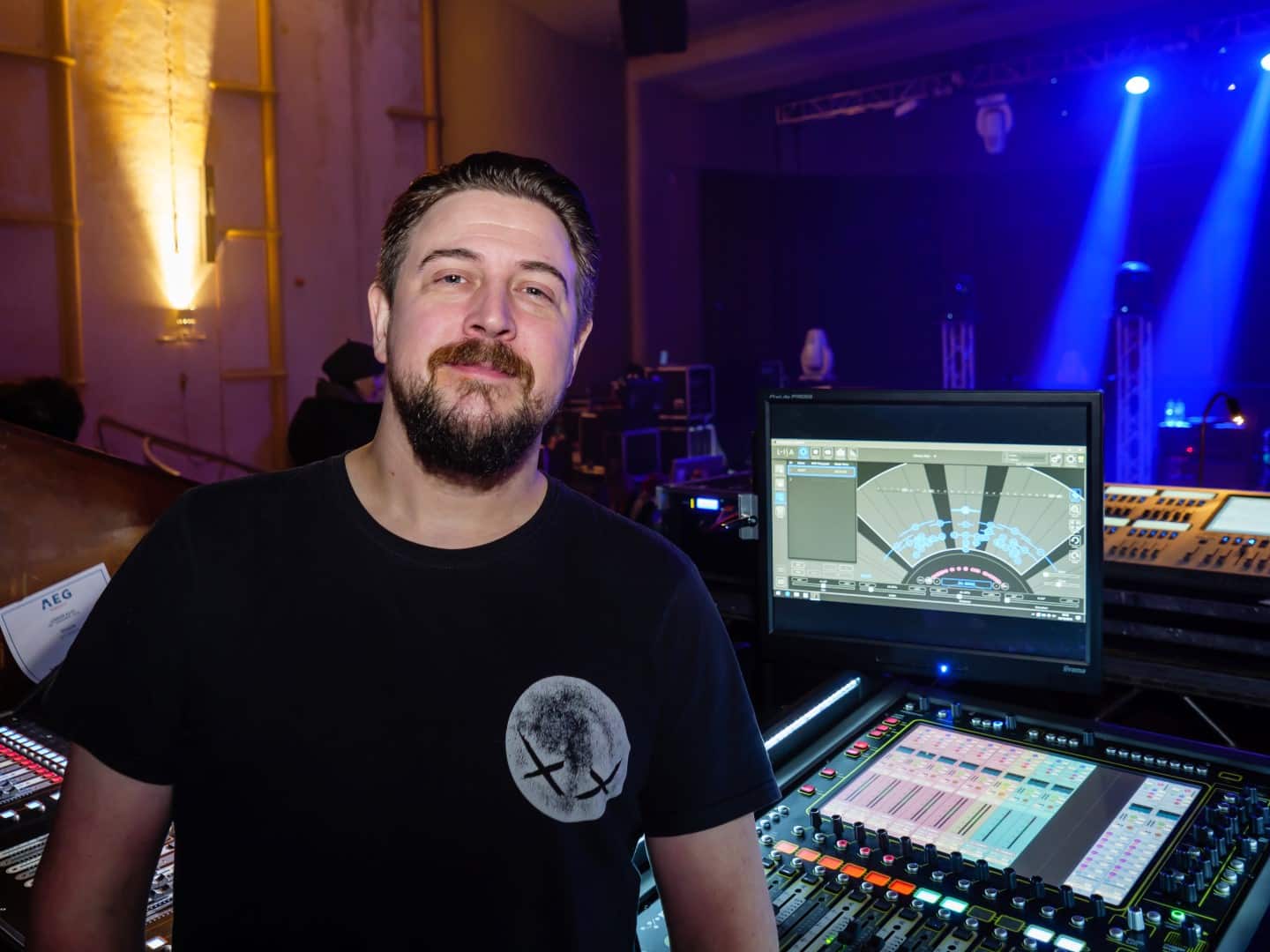
Marr’s Front of House Engineer, Russ Miller photo Maria Zhytnikova 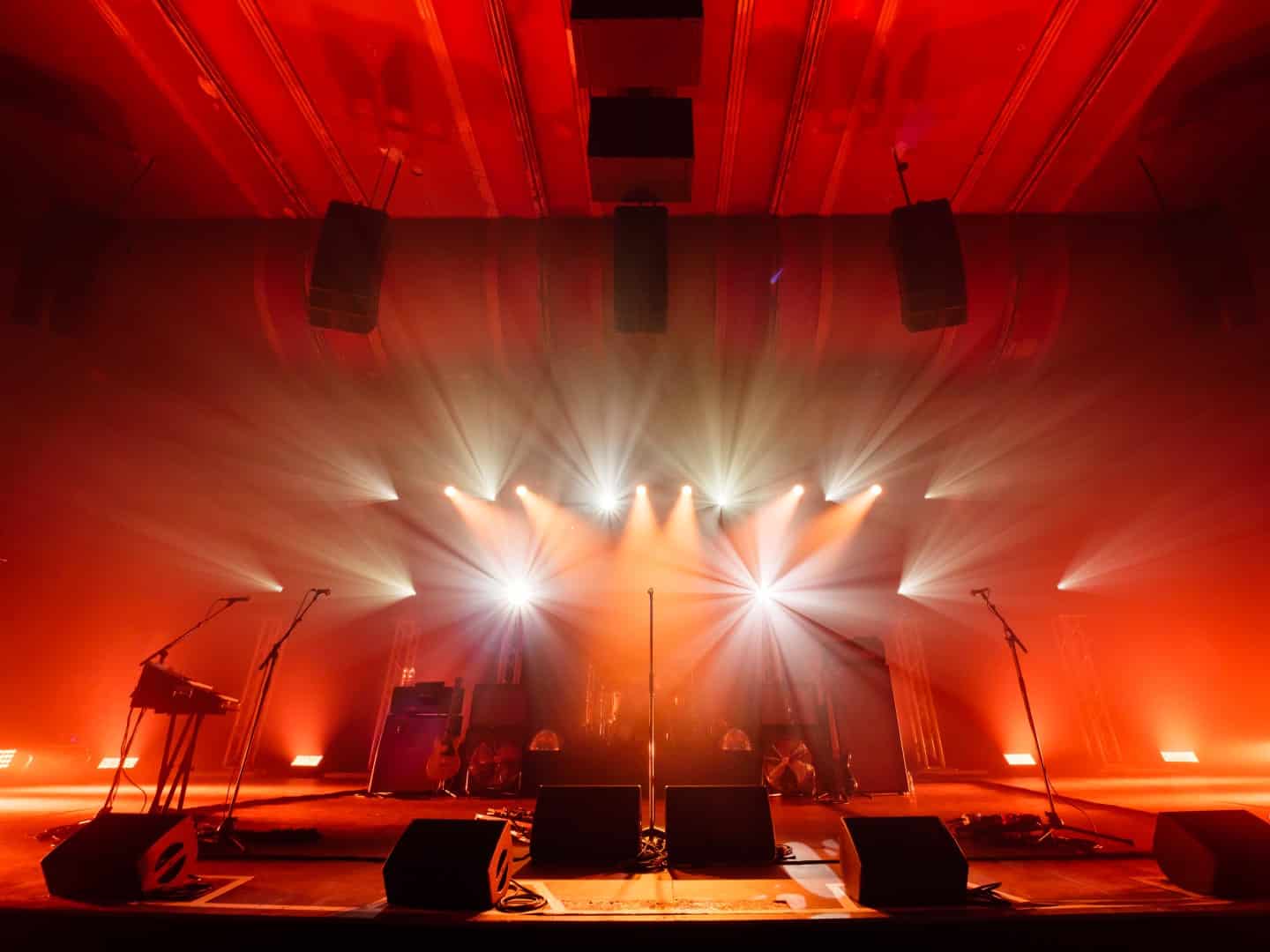
EartH’s L-ISA Frontal system comprises five hangs of seven Kara and a central sub system of four KS28 flown in end-fire configuration in front and above the central Kara hang. Ten X8 enclosures are positioned along the stage lip for front fill. 12 Syva make up the surround system—four per side—mounted along the left, right, and rear walls. photo Maria Zhytnikova 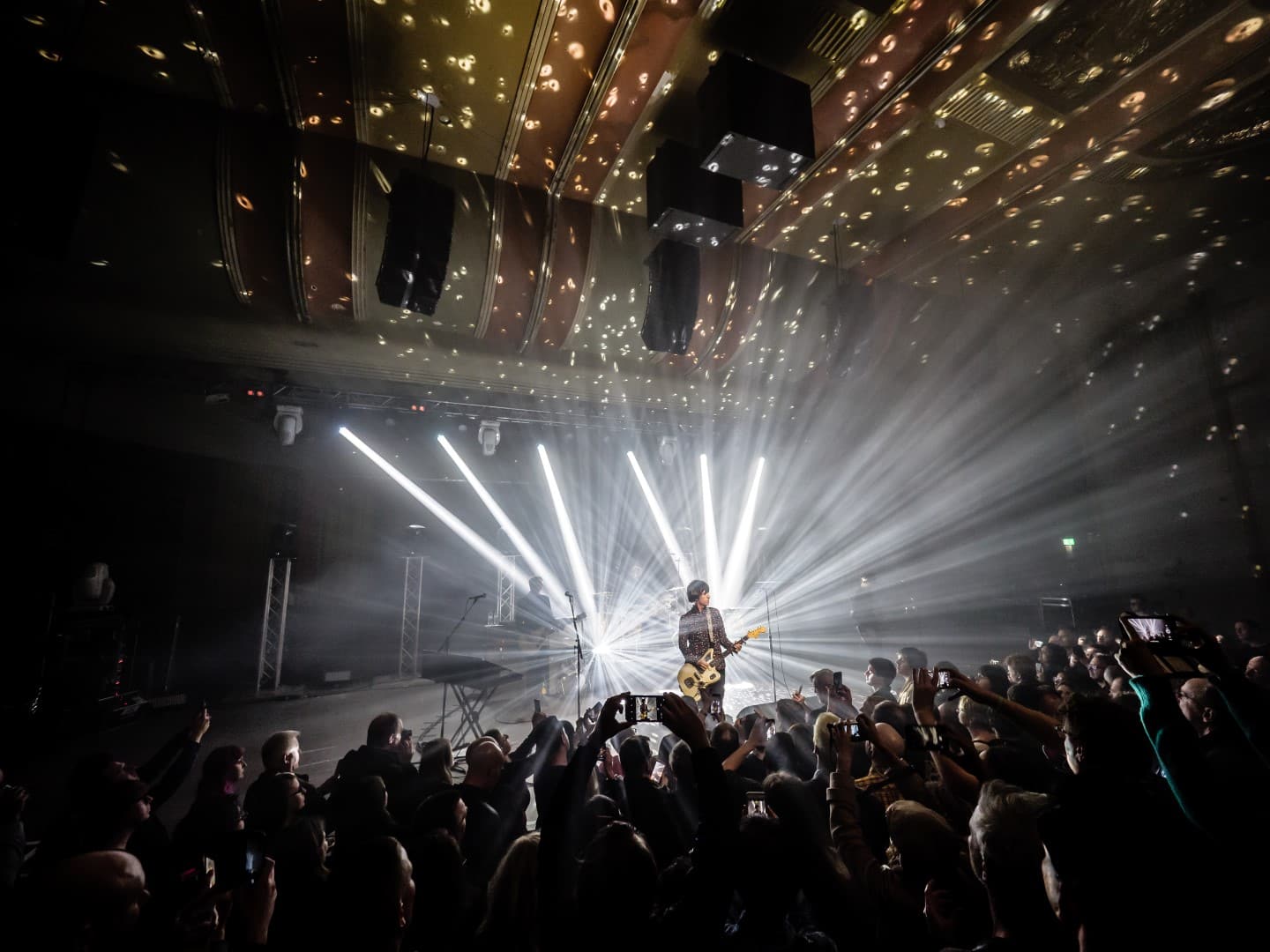
The L-ISA Frontal system, along with eight ceiling mounted X8 allowed Miller to ‘play’ the L-ISA Pan, Width, Depth, and Elevation parameters to achieve Marr’s vision of a ‘trippy and psychedelic’ delivery of New Dominions. photo Maria Zhytnikova
